
Not only are American goldfinches striking in appearance, but these small North American songbirds also exude enthusiasm and liveliness. These finches are a welcomed sight and common visitors at feeders, where they enjoy consuming black sunflower seeds and nyjer. I particularly enjoy viewing the spring males when they are at their brightest yellow. The females as well as the males are duller during the winter but still identifiable by their conical bill; pointed, notched tail; wingbars; and lack of streaking. These finches undergo a molt in the spring and autumn. These are the only cardueline finches to undergo a molt twice a year. Carduelinae refers to of or relating to the passerine subfamily Carduelinae, including the goldfinches, siskins, canaries, and crossbills. During their molts, they look bizarrely patchy. Once the spring molt is complete, the male becomes a brilliant lemon yellow from plant materials in its diet.
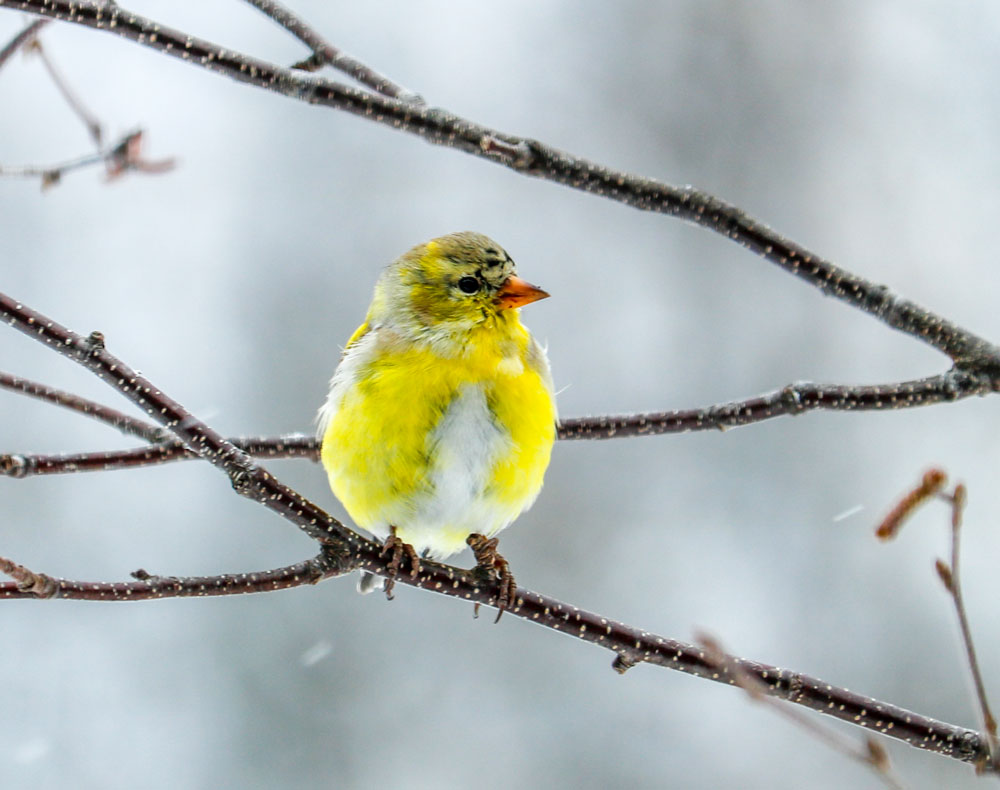
After a short hiatus from my feeders this past fall and early part of the winter, my American goldfinches have returned to my feeders. I recently had to purchase a new forty-pound bag of black sunflower seeds. I’m sure it won’t last too long with these enthusiastic birds emptying my feeders daily.
I would like to share a few interesting facts about the American goldfinch Spinus tristis as well as a few photographs that I have taken of this handsome bird.
American Goldfinch Facts
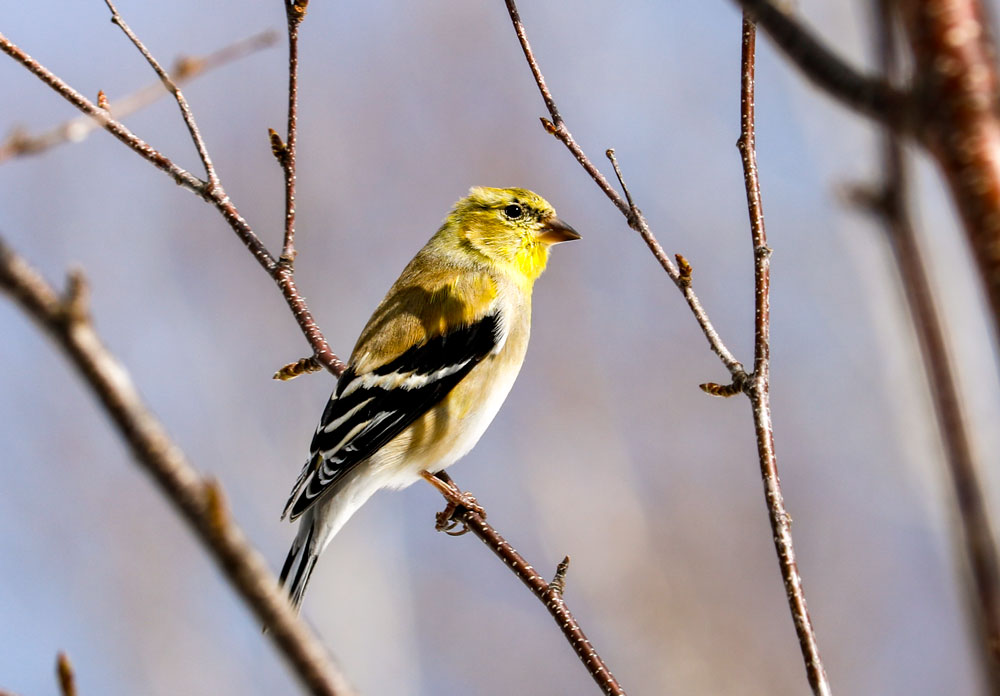
American Goldfinch Symbolism
Personally, I think these finches are one of the most attractive members of the finch family. Not only are birders intrigued by their appearance, but what do we know about their symbolism?
Goldfinches are said to be symbolic of joy, enthusiasm, positivity, and persistence. In Christianity, these birds have a strong symbolism and are considered to be sacred. In ancient Egyptian culture, they’re personified as the souls of dead human beings. The Native Americans consider them to be symbolic of prosperity and abundance.
Appearance
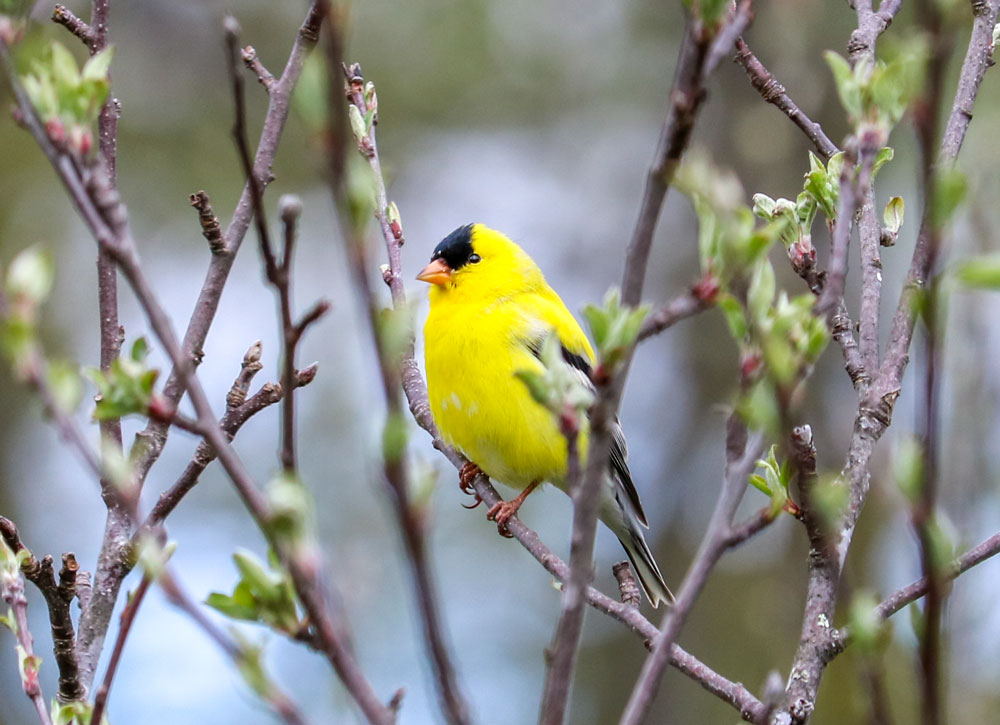
The American goldfinch has a short, conical bill and a small, head, long wings, and a short, notched tail.

During the spring and early summer, adult males are bright yellow with a black forehead, black wings with white markings, and white patches that are both located above and beneath the tail. Adult females are duller yellow beneath and olive above. Winter birds are drab in color, unstreaked brown, with blackish wings and two pale wingbars.
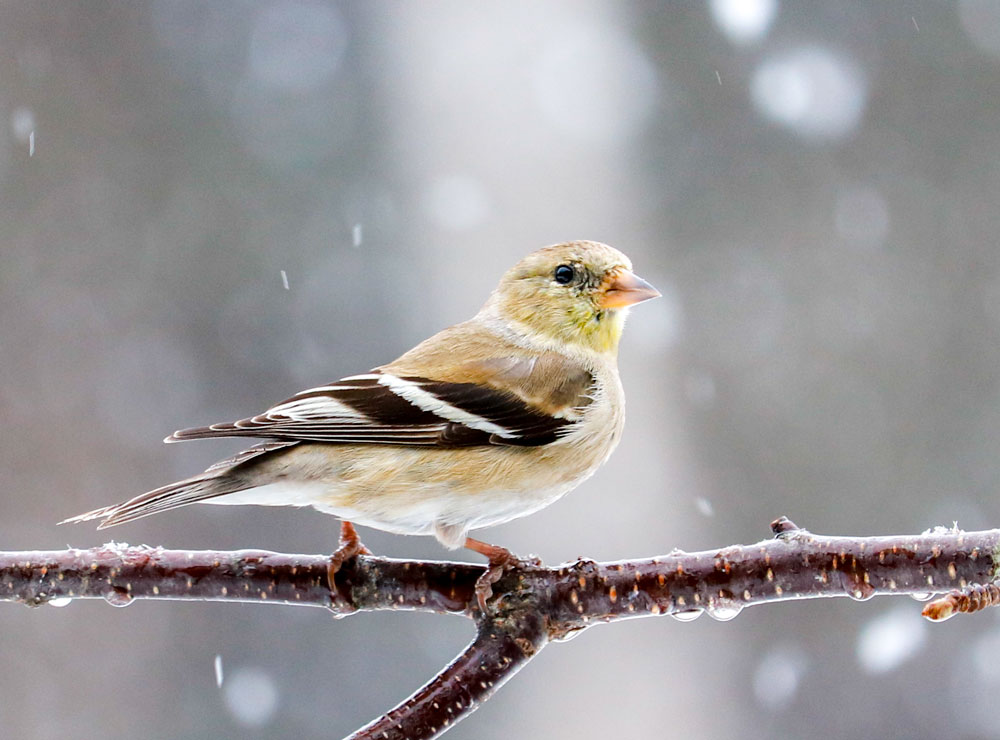
Habitat
American goldfinches prefer weedy fields, open floodplains, and other overgrown areas, particularly with sunflower, aster, and thistle plants for food sources and some shrubs and trees for nesting. They are also common in suburbs, parks, and backyards.
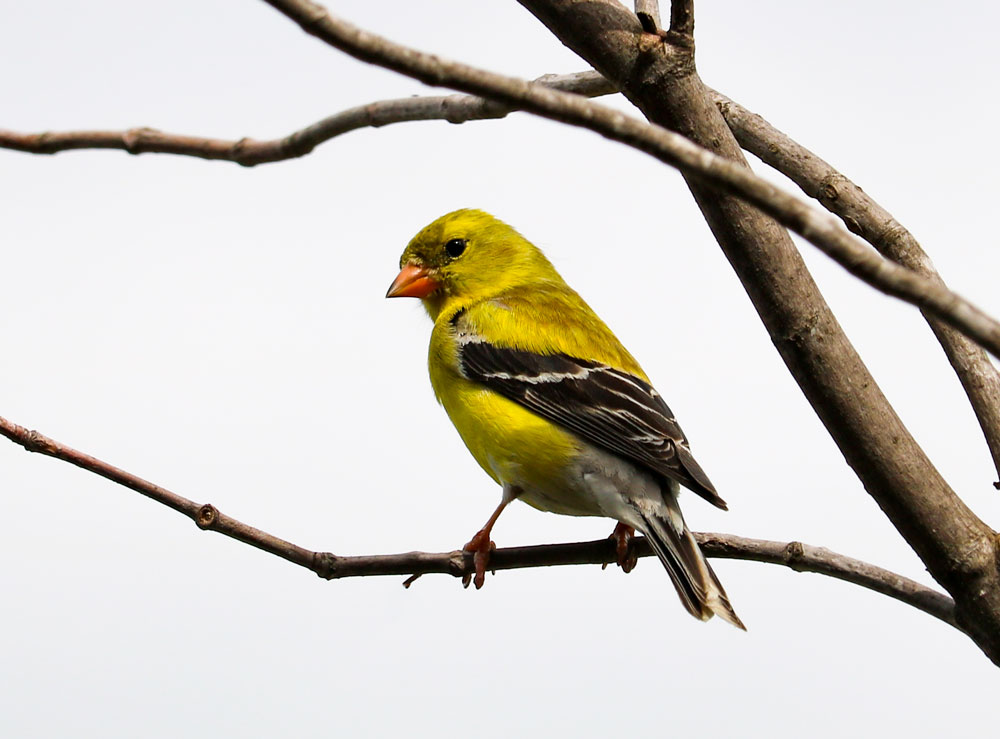
Diet
Cardueline finches are specialized seed-eaters, and unlike most passerine birds, they feed their young mostly on seeds, which are regurgitated. These goldfinches are one of the strictest vegetarians in the avian world as they eat seeds almost exclusively. The main types include seeds from composite plants (in the family Asteraceae: sunflowers, thistle, asters, etc.), grasses, and trees such as alder, birch, western red cedar, and elm. At bird feeders, they eat nyjer and sunflower seeds. With the exception of the breeding season, they usually forage in flocks.
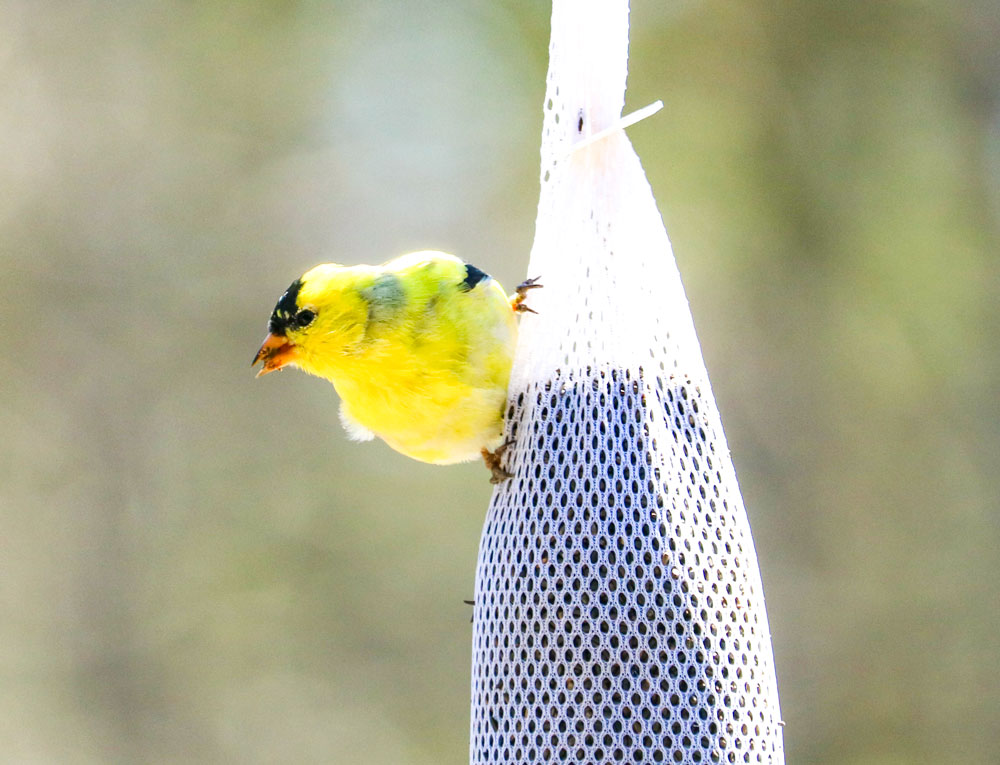
Behavior
American goldfinches are active, acrobatic finches that balance on the seedheads of thistles, dandelions, and other plants to pluck seeds. They have a bouncy flight during which they frequently make their po-ta-to-chip calls. Although males sing enthusiastically during spring, pairs do not nest until mid-summer, when thistles and other weeds have gone to seed.
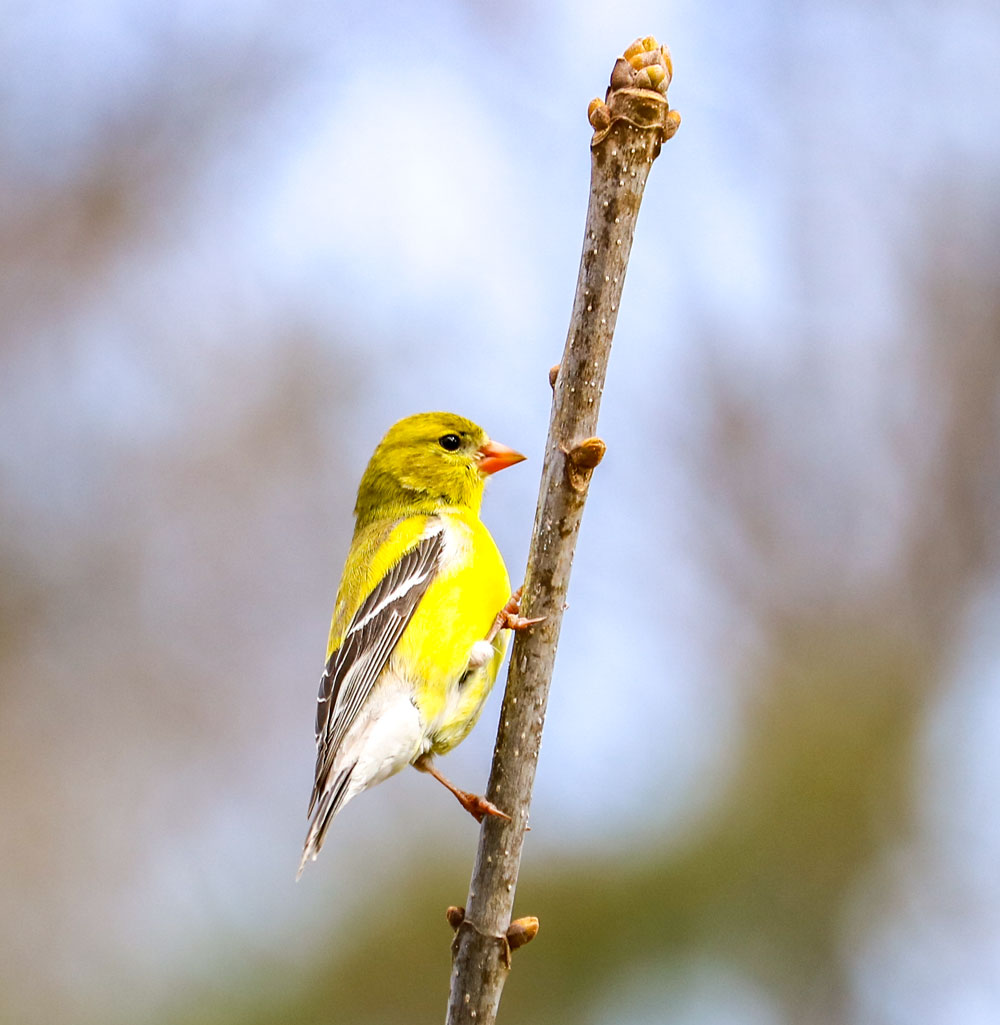
Sounds & Calls
Male goldfinches sing a long and variable series of twitters and warbles that can be several seconds long. The notes and phrases are variable and repeated in seemingly random order. These birds continue to learn song patterns throughout life.

The American Goldfinch’s most common call is its contact call, often given during flight. It sounds like the bird is quietly saying po-ta-to-chip with a very even cadence. Birds sometimes will give harsh threat calls when in feeding flocks or at the nest. Males make a tee-yee courtship call upon landing near a female during the spring or early summer, often followed by a burst of song. Females brooding nestlings make a rapid sequence of high notes when they hear their mate approaching with food. If they feel threatened, birds at their nest make a loud, two-parted bay-bee call
Nesting
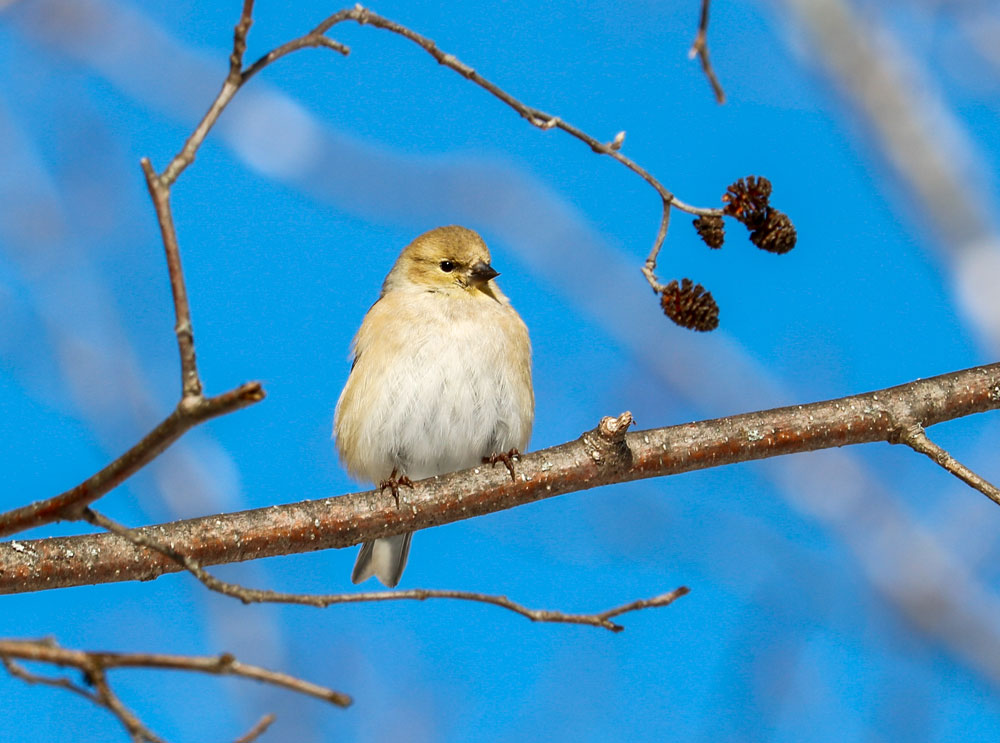
American Goldfinches breed later than most North American birds. They wait to nest until June or July when milkweed, thistle, and other plants have produced their fibrous seeds, which goldfinches incorporate into their nests and also feed their young.
Nesting begins late in the season in many areas, with most nesting activity during July and August. In courtship, the male performs a fluttering flight display while singing. Nests usually consist of deciduous shrubs or trees, sometimes in conifers or in dense weeds, usually less than thirty feet above the ground and placed in a horizontal or upright fork. They are built by the female and are a solid, compact cup of plant fibers, spiderwebs, and plant down (especially from thistles); the nests are so well-made that they may even hold water.
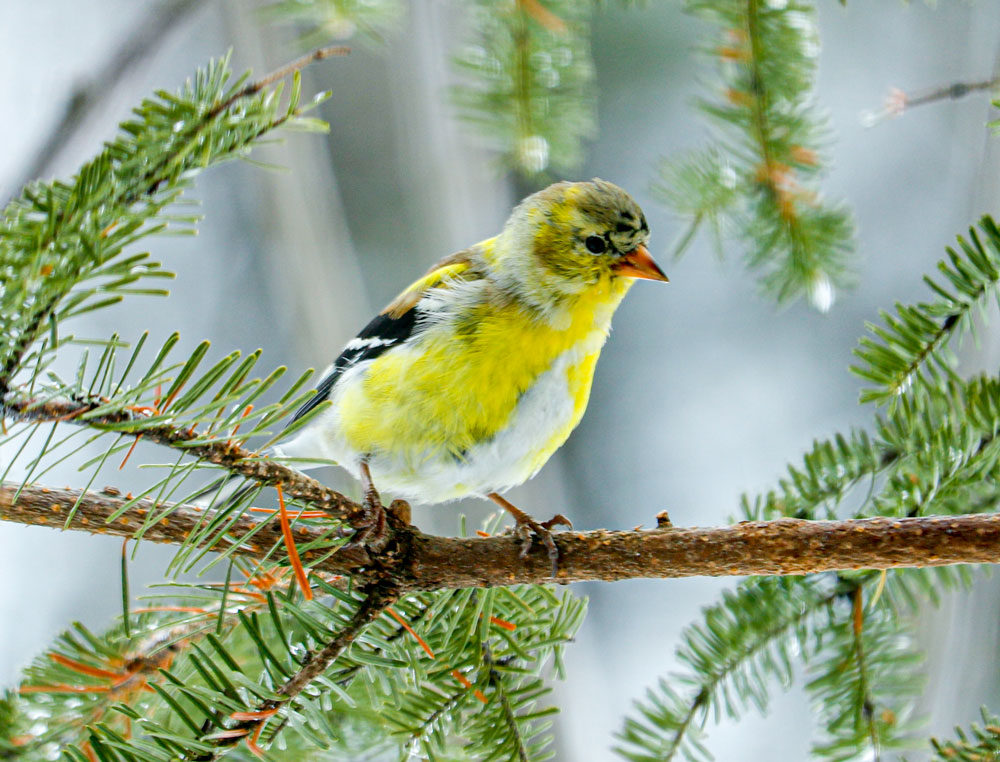
There are four to six eggs, sometimes two to seven. They are pale bluish-white, occasionally with light brown spots. Incubation is done by the female only, for about twelve to fourteen days. The male feeds the female during incubation. Both parents feed nestlings. At first, the male brings food, then the female gives it to the young. The male will provide most of the food in later stages. The young leave the nest about eleven to seventeen days after hatching.
Migration
American goldfinches birds are considered short-distance migrants. They range from mid-Alberta to North Carolina during the breeding season, and from just south of the Canada–United States border to Mexico during the winter months.
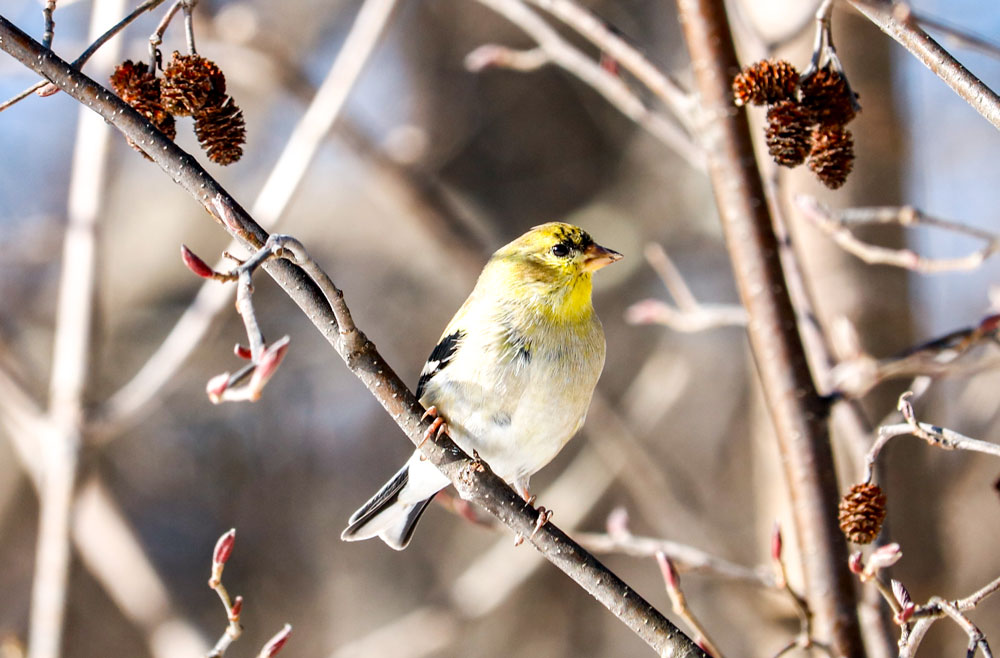
How to Attract American Goldfinches to Your Backyard
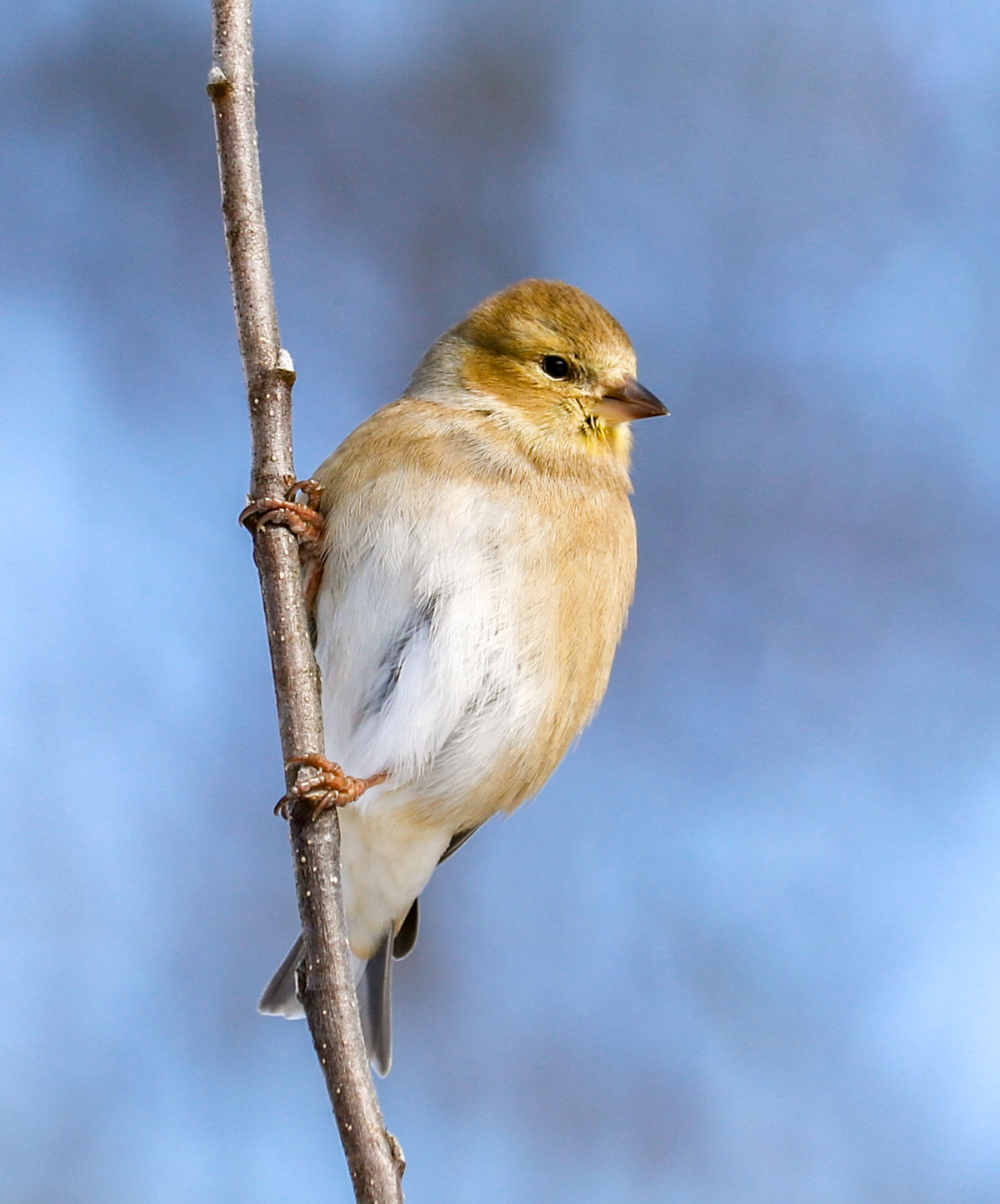
To encourage American goldfinches to visit your yard, try planting native thistles and other composite plants, as well as native milkweed. In regard to birdfeeders, goldfinches are attracted to hoppers, platforms, and hanging feeders. These birds don’t mind visiting feeders that sway in the wind. You will also find that American goldfinches are happy to feed on the ground below feeders as well, eating spilled seeds. As mentioned above, American goldfinches enjoy black sunflower seeds and nyjer. If you provide the food sources mentioned above, I’m sure you will enjoy the arrival of these avian visitors in your yard in no time.
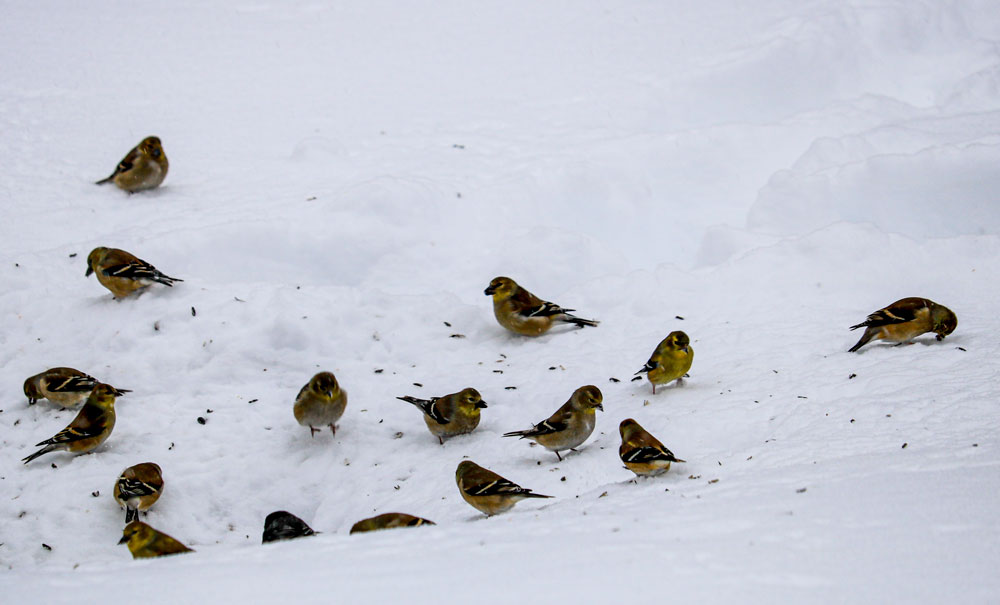
I look forward to seeing the return of their bright yellow feathers with the arrival of the warmer months after they are done with their spring molt. Thank you for reading and I hope you enjoyed learning about these vibrant little birds.
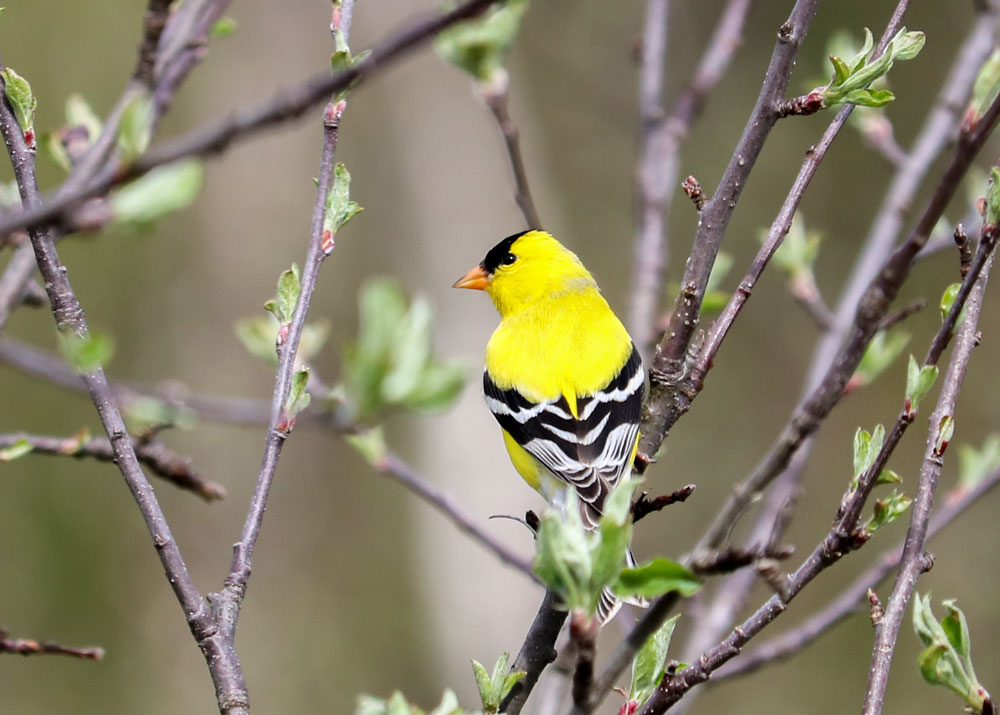
Resources used for this post:
allaboutbirds.org & audubon.org
Leave a Reply